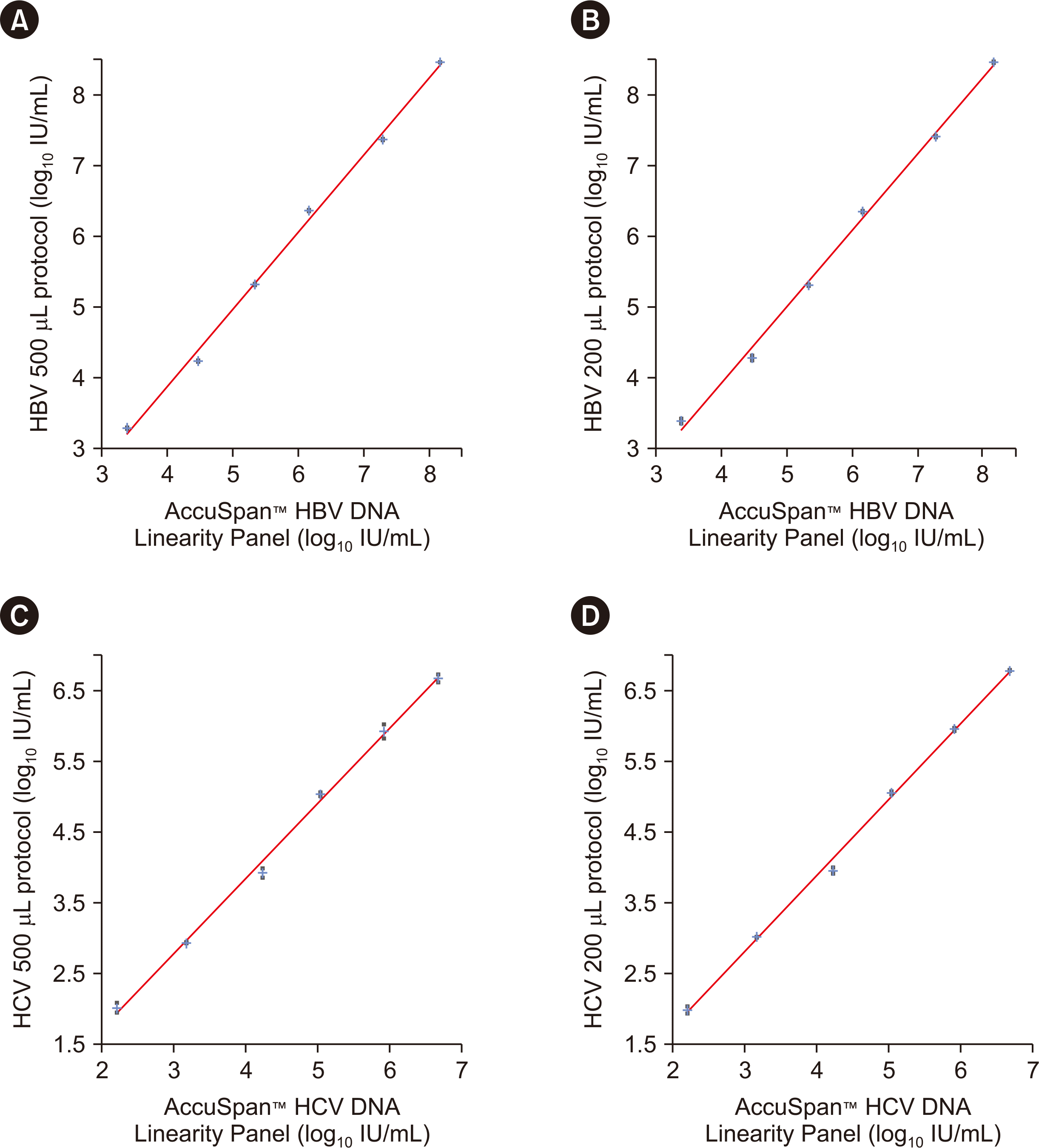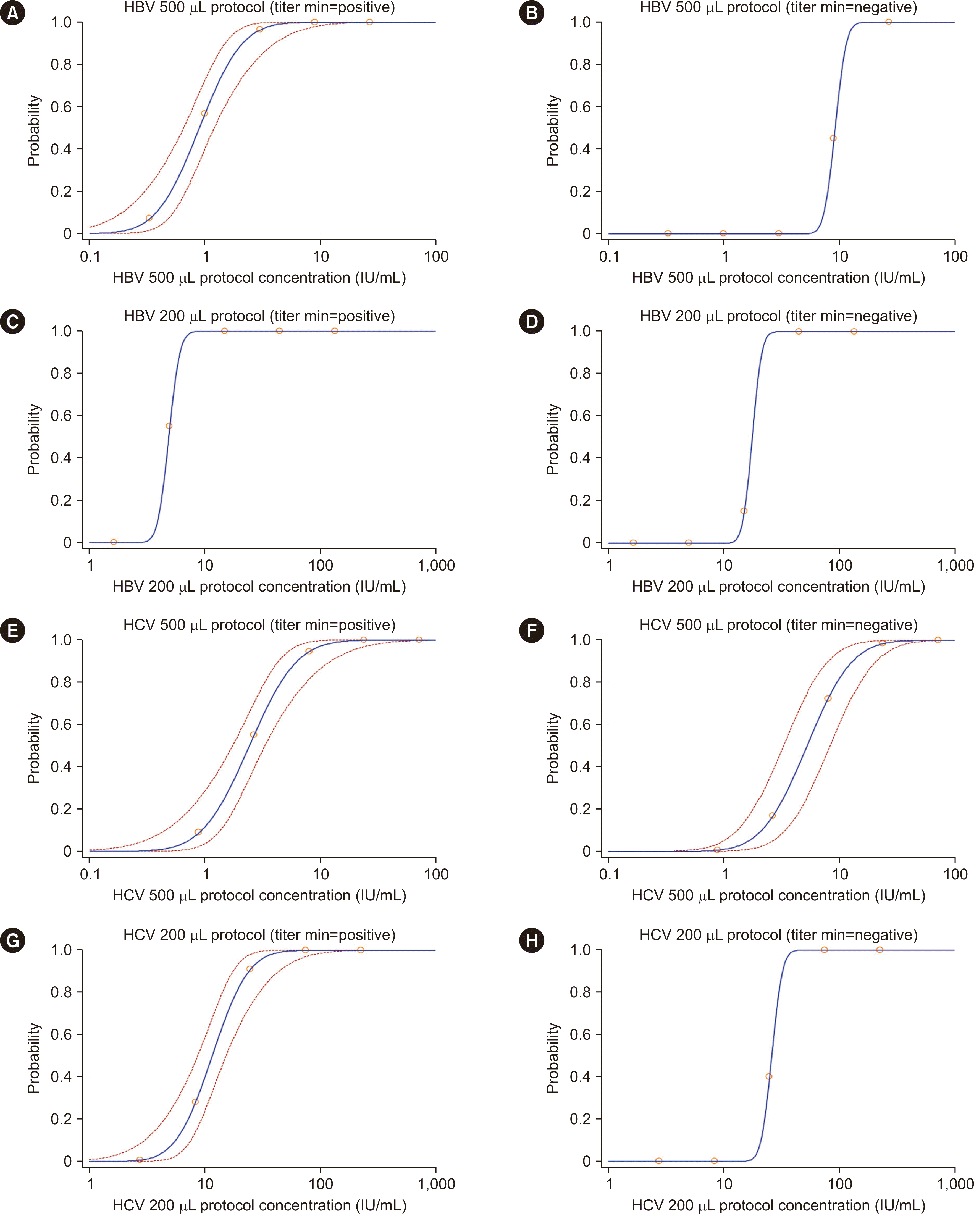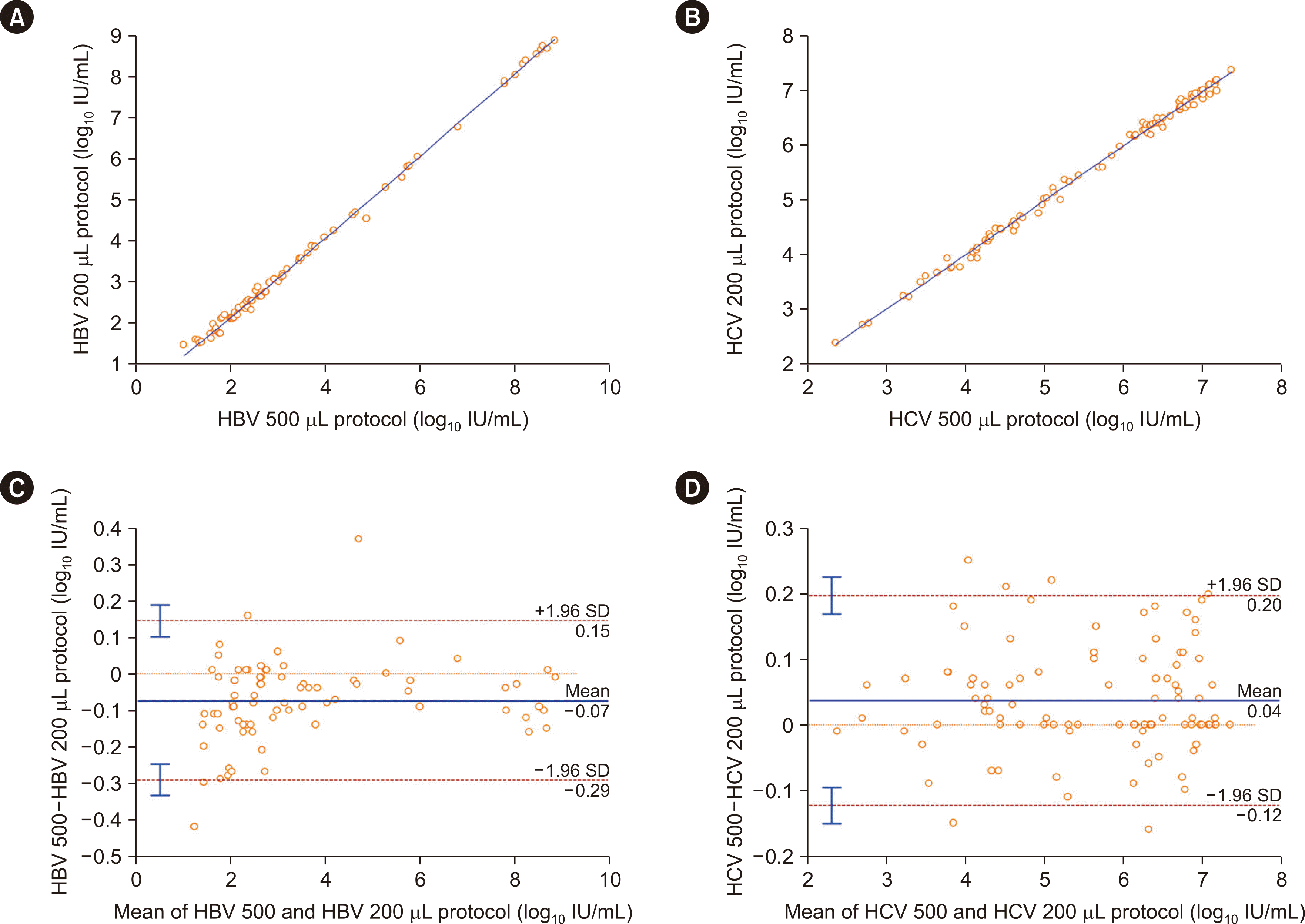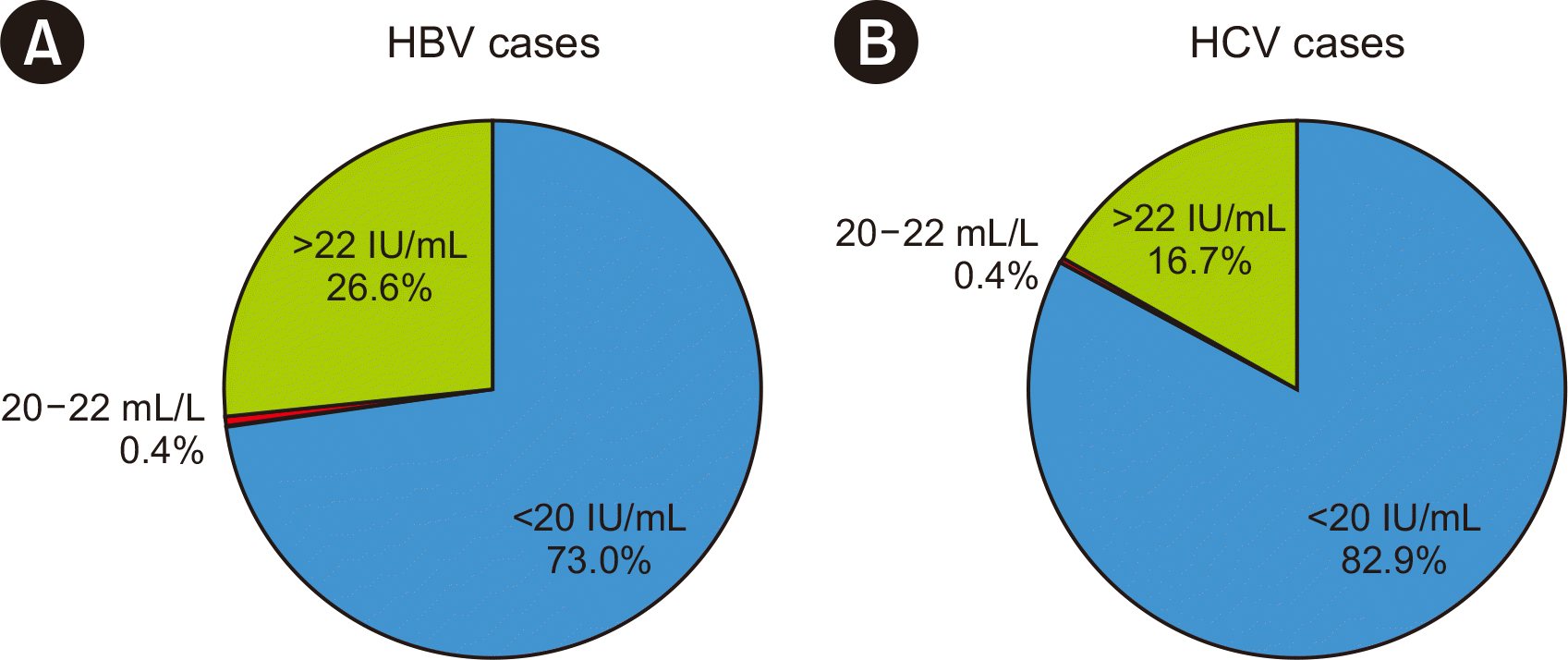3. European Association for the Study of the Liver. 2017; EASL 2017 Clinical Practice Guidelines on the management of hepatitis B virus infection. J Hepatol. 67:370–98.
4. European Association for the Study of the Liver. 2018; EASL recommendations on treatment of hepatitis C 2018. J Hepatol. 69:461–511. DOI:
10.1016/j.jhep.2018.03.026. PMID:
29650333.
5. Terrault NA, Lok ASF, McMahon BJ, Chang KM, Hwang JP, Jonas MM, et al. 2018; Update on prevention, diagnosis, and treatment of chronic hepatitis B: AASLD 2018 hepatitis B guidance. Hepatology. 67:1560–99. DOI:
10.1002/hep.29800. PMID:
29405329. PMCID:
PMC5975958.
6. Hur M, Park M, Moon HW, Choe WH, Lee CH. 2022; Comparison of non-invasive clinical algorithms for liver fibrosis in patients with chronic hepatitis B to reduce the need for liver biopsy: application of enhanced liver fibrosis and Mac-2 binding protein glycosylation isomer. Ann Lab Med. 42:249–57. DOI:
10.3343/alm.2022.42.2.249. PMID:
34635616. PMCID:
PMC8548241.
7. Andersson KL, Chung RT. 2009; Monitoring during and after antiviral therapy for hepatitis B. Hepatology. 49(S5):S166–73. DOI:
10.1002/hep.22899. PMID:
19399793. PMCID:
PMC2679854.
8. Braun P, Delgado R, Drago M, Fanti D, Fleury H, Izopet J, et al. 2017; A European multicientre study on the comparison of HBV viral loads between VERIS HBV assay and Roche COBAS
® TAQMAN
® HBV test, Abbott RealTime HBV assay, Siemens VERSANT HBV assay, and Qiagen Artus HBV RG kit. J Clin Virol. 95:76–83. DOI:
10.1016/j.jcv.2017.08.015. PMID:
28892764.
9. Park Y, Roh J, Kim S. 2022; Performance evaluation of the Aptima assays in comparison with the cobas 6800 Assays for the detection of HIV-1, HBV, and HCV in clinical samples. Ann Lab Med. 42:447–56. DOI:
10.3343/alm.2022.42.4.447. PMID:
35177565. PMCID:
PMC8859551.
10. Tschäpe J, Cobernuss-Rahn A, Boyle S, Parkin N, LaBrot B, Aslam S, et al. 2022; Multisite performance evaluation of the Cobas 5800 System and comparison to the Cobas 6800/8800 systems for quantitative measurement of HBV, HCV, and HIV-1 viral load. Microbiol Spectr. 10:e0312522. DOI:
10.1128/spectrum.03125-22. PMID:
36314963. PMCID:
PMC9769654.
11. Tan NK, Carrington D, Pope CF. 2018; Verification of the Roche Cobas
® 6800 PCR 200 µl and 500 µl protocols for the quantification of HIV-1 RNA, HBV DNA and HCV RNA and evaluation with COBAS
® Ampliprep/COBAS
® TaqMan
® assays. J Med Microbiol. 67:1711–7. DOI:
10.1099/jmm.0.000838. PMID:
30325300.
12. McHugh ML. 2012; Interrater reliability: the kappa statistic. Biochem Med (Zagreb). 22:276–82. DOI:
10.11613/BM.2012.031. PMID:
23092060.
13. Schober P, Boer C, Schwarte LA. 2018; Correlation coefficients: appropriate use and interpretation. Anesth Analg. 126:1763–8. DOI:
10.1213/ANE.0000000000002864. PMID:
29481436.
14. European Association for the Study of the Liver. 2012; EASL clinical practice guidelines: management of chronic hepatitis B virus infection. J Hepatol. 57:167–85. DOI:
10.1016/j.jhep.2012.02.010. PMID:
22436845.
15. Terrault NA, Bzowej NH, Chang KM, Hwang JP, Jonas MM, Murad MH, et al. 2016; AASLD guidelines for treatment of chronic hepatitis B. Hepatology. 63:261–83. DOI:
10.1002/hep.28156. PMID:
26566064. PMCID:
PMC5987259.
16. Sidharthan S, Kohli A, Sims Z, Nelson A, Osinusi A, Masur H, et al. 2015; Utility of hepatitis C viral load monitoring on direct-acting antiviral therapy. Clin Infect Dis. 60:1743–51. DOI:
10.1093/cid/civ170. PMID:
25733369. PMCID:
PMC4834854.
17. Wirden M, Larrouy L, Mahjoub N, Todesco E, Damond F, Delagreverie H, et al. 2017; Multicenter comparison of the new Cobas 6800 system with Cobas Ampliprep/Cobas TaqMan and Abbott RealTime for the quantification of HIV, HBV and HCV viral load. J Clin Virol. 96:49–53. DOI:
10.1016/j.jcv.2017.09.007. PMID:
28950186.
18. Baylis SA, Hanschmann KO, Schnierle BS, Trösemeier JH, Blümel J. Zika Virus Collaborative Study Group. 2017; Harmonization of nucleic acid testing for Zika virus: development of the 1st World Health Organization International Standard. Transfusion. 57:748–61. DOI:
10.1111/trf.14026. PMID:
28229462.
19. Baylis SA, Wallace P, McCulloch E, Niesters HGM, Nübling CM. 2019; Standardization of nucleic acid tests: the approach of the World Health Organization. J Clin Microbiol. 57:e01056–18. DOI:
10.1128/JCM.01056-18. PMID:
30257900. PMCID:
PMC6322456.
20. Scholtès C, Hamilton AT, Plissonnier ML, Charre C, Scott B, Wang L, et al. Performance of the Cobas
® HBV RNA automated investigational assay for the detection and quantification of circulating HBV RNA in chronic HBV patients. J Clin Virol. 2022; 150-151:105150. DOI:
10.1016/j.jcv.2022.105150. PMID:
35427860.
21. Caliendo AM, Valsamakis A, Bremer JW, Ferreira-Gonzalez A, Granger S, Sabatini L, et al. 2011; Multilaboratory evaluation of real-time PCR tests for hepatitis B virus DNA quantification. J Clin Microbiol. 49:2854–8. DOI:
10.1128/JCM.00471-11. PMID:
21697326. PMCID:
PMC3147738.
22. Han MS, Park Y, Nah H, Kim HS. 2017; Comparison of the Qiagen Artus HBV QS-RGQ assay with the Roche COBAS AmpliPrep/COBAS TaqMan HBV assay for quantifying viral DNA in sera of chronic hepatitis B patients. Ann Lab Med. 37:248–53. DOI:
10.3343/alm.2017.37.3.248. PMID:
28224771. PMCID:
PMC5339097.
23. Ismail AM, Sivakumar J, Anantharam R, Dayalan S, Samuel P, Fletcher GJ, et al. 2011; Performance characteristics and comparison of Abbott and Artus real-time systems for hepatitis B virus DNA quantification. J Clin Microbiol. 49:3215–21. DOI:
10.1128/JCM.00915-11. PMID:
21795507. PMCID:
PMC3165604.
24. Yeh ML, Huang CF, Huang CI, Liu SF, Yang HL, Hsieh MY, et al. 2014; Abbott RealTime HBV assay is more sensitive in detection of low viral load and little impacted by drug resistant mutation in chronic hepatitis B patients under nucleot(s)ide analogues therapy. PLoS One. 9:e101790. DOI:
10.1371/journal.pone.0101790. PMID:
25000502. PMCID:
PMC4085076.
25. Vermehren J, Colucci G, Gohl P, Hamdi N, Abdelaziz AI, Karey U, et al. 2011; Development of a second version of the Cobas AmpliPrep/Cobas TaqMan hepatitis C virus quantitative test with improved genotype inclusivity. J Clin Microbiol. 49:3309–15. DOI:
10.1128/JCM.00602-11. PMID:
21752967. PMCID:
PMC3165622.








 PDF
PDF Citation
Citation Print
Print



 XML Download
XML Download